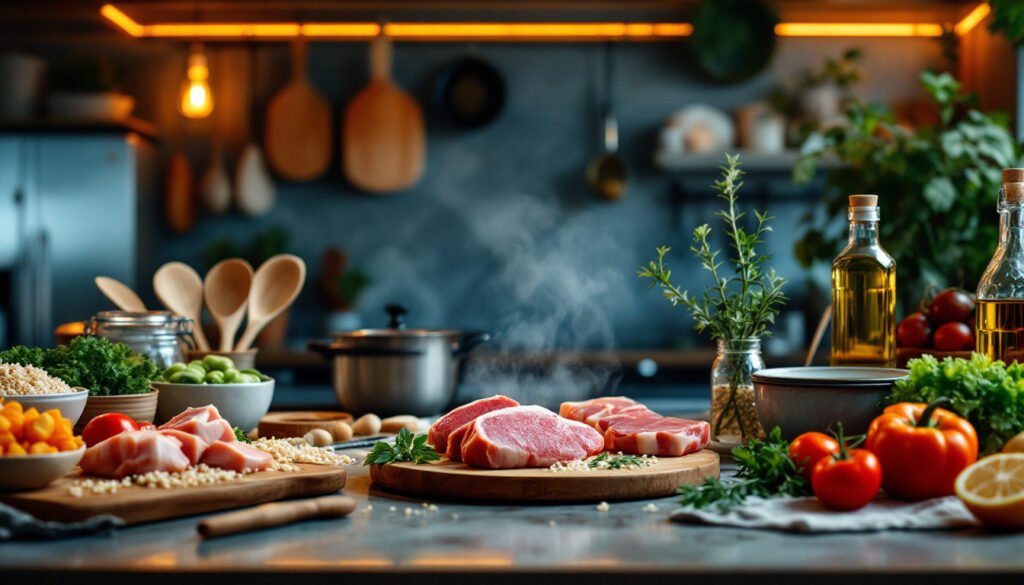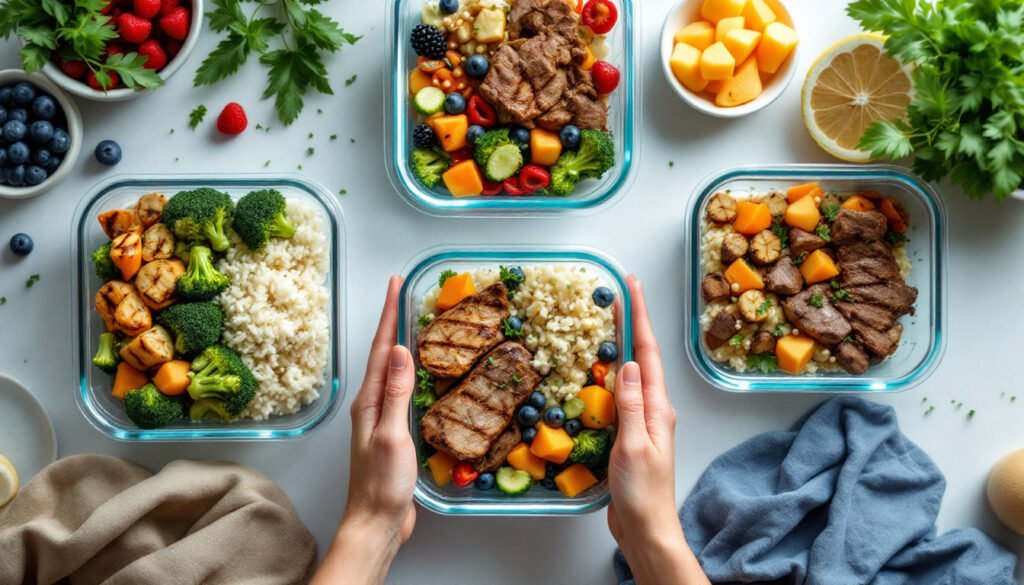Have you ever opened the fridge after a long day and wished a healthy meal would magically appear?
You’re not alone. That’s why mastering meal prep for healthy eating is one of the most empowering (and underrated) habits you can build — especially if you’re aiming for consistency, energy, and fewer takeout temptations.
Forget perfection. This is about progress — and this guide is here to show you how to make meal prep work for you, no matter how busy your schedule is.
Why Meal Prep Works for Healthy Eating
When it comes to staying on track with your wellness goals, decision fatigue is the enemy.
Meal prep helps you eliminate guesswork, avoid last-minute cravings, and actually enjoy what you’re eating — without spending hours in the kitchen every day.
Here’s what you gain with a simple weekly meal prep system:
- More control over what you eat and how you feel
- Less stress during busy weekdays
- Better nutrition, because you’re planning ahead instead of reacting
It’s not about being rigid. It’s about setting yourself up for success with small wins that stack up.
What You Need Before You Start

Before you start slicing vegetables or cooking protein in batches, it helps to have your space and tools ready.
Smart Containers and Prep Tools
Invest in a few reusable glass containers (they’re microwave- and freezer-safe), good knives, cutting boards, and optional extras like a rice cooker or veggie steamer.
You don’t need a Pinterest kitchen — just the essentials that keep things clean and easy.
Ingredients That Keep Well
Think in terms of versatile ingredients that store well:
- Grains: brown rice, quinoa, couscous
- Proteins: grilled chicken breast, lean beef, hard-boiled eggs
- Veggies: roasted sweet potatoes, broccoli, bell peppers
- Add-ons: fresh herbs, nuts, dressings, seasonal fruits
Step-by-Step Meal Prep for Healthy Eating

You don’t need a rigid plan or hours in the kitchen — just a system. Here’s how I approach it:
✅ Step 1 – Plan Around Your Real Life
Start by asking:
How many meals do I want ready this week? When am I busiest?
Planning just 3–4 lunches and 2 dinners is often enough to avoid decision fatigue.
✅ Step 2 – Keep It Simple, Repeatable, and Balanced
Choose 2 proteins, 2 grains, and 3 veggies that can mix-and-match.
Example:
- Chicken breast + flank steak
- Rice + couscous
- Roasted zucchini + carrots + greens
Add fresh fruits for snacks and toppings like seeds or tahini for variety.
✅ Step 3 – Batch, Store, and Label
Cook in batches and portion your meals into labeled containers.
Pro tip: keep sauces or dressings separate to prevent sogginess.
Use one shelf in the fridge for your ready-to-go meals so you’re not digging around on a busy Tuesday night.
Time-Saving Tricks to Stay Consistent
- Theme your days. Ex: “Pasta Mondays” or “Stir-Fry Fridays” = fewer decisions.
- Double-batch dinners. Cook extra at night and pack the leftovers for lunch.
- Prep snacks too. Chopped fruits, boiled eggs, or yogurt bowls keep you fueled between meals.
- Use grocery shortcuts. Pre-cut veggies or rotisserie chicken save serious time when needed.
Remember: you don’t have to prep everything.
Sometimes just having your protein ready makes all the difference.
Final Thoughts: Progress Over Perfection
Meal prep for healthy eating doesn’t have to be overwhelming, expensive, or time-consuming.
The goal is to reduce stress, not add to it. Start small. Keep it flexible. And celebrate every time you skip the delivery app and enjoy something you made.
Because consistency isn’t built on willpower — it’s built on strategy. And this one is a game changer.
Here’s to your wellness journey,
Olivia Grant 🌿










